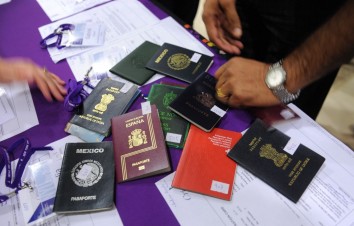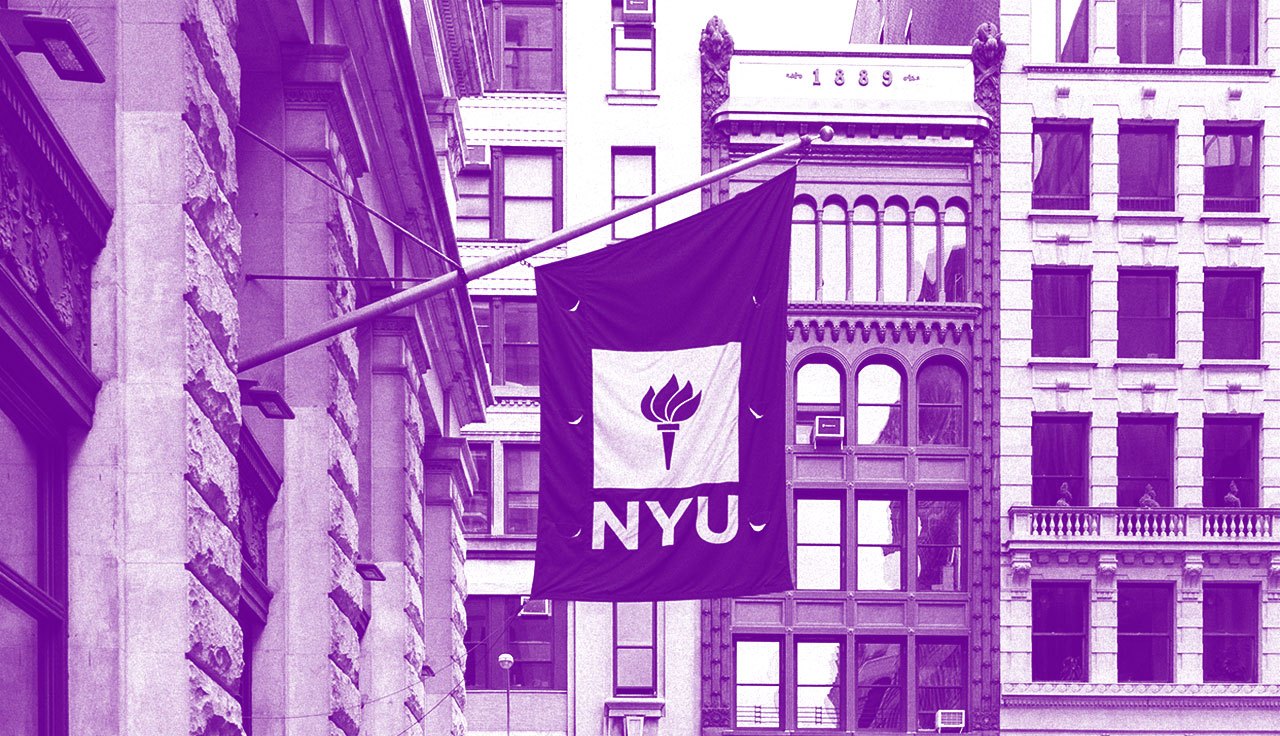Published August 26, 2024
Master International Travel and New Campus Life

Embarking on international travel to pursue your studies involves more than just academic preparation. It requires adapting to long travel journeys and new environments. As an international student, I endure 16-hour flights twice each semester, and I had to navigate the complexities of settling into two distinct campuses: NYU in New York City as my main campus and NYU Shanghai as my study away campus.
In this article I share practical tips on surviving lengthy flights and effectively adapting to a new city and campus. If you are an international student studying abroad for the first time or a student preparing to study away through NYU while dealing with jet lag, transportation, or adapting to your environment, you may find these insights helpful in your academic pursuits abroad.
Arrive at the Airport
Check-Ins and Boarding
Arriving at the airport for an international flight involves more than just showing up. Careful planning and timing are crucial. To ensure a smooth start to your journey, try to arrive at least three hours before your flight. International airports can be vast and overwhelming. Often, you may experience lengthy lines for check-in and security.
It’s vital to know the restrictions regarding the size and weight of checked luggage. These regulations can vary by airline and could lead to unexpected fees or the need to repack at the airport. Additionally, take the time to carefully review and double-check the regulations for both carry-on and checked luggage to ensure you are not carrying prohibited items. This step can save you time and prevent the inconvenience of having to discard items during security checks.
If you have connecting flights, arrange for your luggage to be checked directly through to your final destination when purchasing your tickets. This eliminates the need to pass through customs and retrieve and recheck your luggage. You will save considerable time. Ensure that you allow at least two hours for layovers to accommodate any delays in your previous flights. If your connecting flight is within the United States, remember to allocate an additional one to two hours (at least three hours in total) to pass through customs.
Prioritize checking your luggage early to avoid the stress of rushing through these initial steps. Once you’ve cleared customs and security, consider having a good meal at a restaurant close to your boarding gate. This strategy ensures you won’t miss your flight and addresses the oft-underwhelming quality of airplane meals and the common decrease in appetite at high altitudes.
It’s also important to double-check the boarding time and gate number. These details can change and may differ from the information printed on your boarding pass. Remember to download the airline’s app to receive the most updated information. This preparation allows you to approach your flight with ease, knowing you’ve managed every detail with attention.
At the Beijing airport during luggage check-in last year, I found myself amid a throng of excited fans who had come for a send-off of Chinese pop star Roy Wang (王源), who was on the same flight to the United States as me for his studies. With hundreds of fans cheering, waving, and running, the airport floor was shaking. It was quite crazy.


The LONG International Flight
Essential Preflight Preparations
Preparing for a long flight involves more than packing your luggage. It’s also about ensuring maximum comfort during those extended hours in the air. Start with the basics of your attire: opt for a long-sleeved hoodie or sweatshirt, long sweatpants, and long thick socks. The cabin air can be quite chilly, making these cozy items indispensable. For footwear, slippers or Crocs can offer the ease and comfort necessary for moving around during the flight.
A neck cushion is another critical component for your comfort, particularly on a long flight. Through personal experience, I’ve found that neck cushions filled with beads (for example the MUJI one) are more comfortable than those made with sponges. The beads adjust to the shape of your neck, providing superior support and comfort. If your waist tends to become sore easily, you can also bring an inflatable waist pillow. Additionally, consider bringing an eye mask and ear plugs to help you block out light and reduce noise. If you have smaller ear canals, ensure you get ear plugs that fit properly.
Entertainment is essential on long flights. But not all airlines provide disposable earbuds. So bringing your own wired earbuds can be crucial for enjoying the in-flight entertainment system, allowing you to watch movies and TV shows. Additionally, for those sensitive to noise or anyone who simply wants to rest, noise-canceling headphones can be invaluable. They help drown out the ambient noise of the aircraft and chatter, making it easier to relax or sleep.
While power banks are restricted on planes, it’s wise to carry several USB Type A charging cables. Not all aircraft have USB Type C ports, and you a spare cable ensures you remain connected, especially if one fails. Also, pack a charger; some seats may not have USB outlets.
Health is another factor to consider. Pack some common medications like Advil or Tylenol in case you catch a cold, and consider melatonin to help you adjust to new time zones.
For those who need extra legroom, selecting a seat in an exit row or the first row through the airline’s app for an extra fee can make a significant difference. An inflatable footrest can be a great addition if you opt for these seats with more space. For tighter spaces, a small folding step stool can serve as a compact solution to rest and elevate your legs, helping prevent stiffness and discomfort.
By meticulously preparing for your in-flight needs, you can transform a potentially taxing journey into a more relaxed and enjoyable experience.


Maximizing Comfort and Adjusting Time Zones During Your Flight
Making the most of your time on a plane involves strategic planning, especially when it comes to adjusting to the time zone of your arrival location. If your flight lands in the morning, try to stay up all night before the flight. Once onboard, try to use the opportunity to sleep throughout the flight. This approach not only helps the hours pass quickly but also ensures you’re refreshed and alert upon arrival. Conversely, if your flight arrives at night, try to stay awake during the whole flight. This helps synchronize your body’s clock to the local time, reducing jet lag.
Entertainment is crucial in making a long flight enjoyable. There’s always a chance that the in-flight entertainment system may not cater to your tastes, so it’s wise to come prepared. Download your favorite movies, TV shows, music albums, audiobooks, and e-books onto your devices like an iPad, smartphone, or Kindle before you leave. Devices with ink screens, such as Kindles, are particularly suited for reading on planes as they are easier on the eyes in dim lighting.
Many airplanes now offer Wi-Fi, though it’s typically a paid service. You can usually purchase Wi-Fi through the airline’s app once onboard. Having internet access allows you to pass the time by staying connected with friends and family, browsing social media, or catching up on work. This connectivity can make a significant difference in how quickly and enjoyably your flight passes, keeping you engaged and occupied throughout the journey.


Landing and Beyond
Preparing for Arrival
Arriving in a new country involves several steps to ensure a smooth transition. Before your flight, exchange some currency at your local bank. Rates are generally more favorable there in comparison to currency exchanges at the airport. Remember, there’s no need to exchange large amounts of cash—it’s too easy to lose and too cumbersome to handle.
Securing a means of communication is essential. Purchase a temporary calling card online that allows for data usage, text messages, and phone calls. Additionally, activate international roaming on your original mobile phone to stay connected. Furthermore, try carrying a pin to change your SIM card. I usually keep one in my phone case for easy access.
When it comes to electrical appliances, it’s important to consider the differences in voltage and plug types between countries. For instance, China and Europe typically use 220–240V, while the United States uses 110V, and each country uses different plug types. Unless you are certain that the voltage and plug types are compatible, it’s safer to leave your appliances at home. However, if they are compatible, feel free to bring along essential devices.
Lastly, adapt to your new environment by downloading local apps. These may include apps for translation, maps, online shopping, food delivery, electronic payment, public transportation, and taxi services. These tools will help you navigate the local landscape more effectively, making your initial days less daunting and more enjoyable.


Embracing the New Campus
Transitioning to a new campus is an exciting phase of your study abroad journey. Visiting the local Ikea is one of the first practical steps to take upon your arrival. Ikea offers affordable and standardized furnishing options, allowing you to equip your new living space comfortably.
Engaging with your community is also crucial for settling in. Make sure to meet with your resident assistant, who can be a valuable resource for campus life insights. Additionally, check your residence hall’s billboards and newsletters for upcoming events. Participating in activities organized by your residence hall, such as karaoke nights, movie screenings, or Broadway show outings, can be great opportunities to connect with fellow students and forge new friendships.
Monitor your email inbox and social media accounts for announcements about NYU Welcome events. These events, held during the first two weeks of each semester, are designed to welcome new students with a host of fun activities, including unique ones like Drag Bingo hosted by drag queens from RuPaul’s Drag Race.
Different schools may also offer specialized events. For example, the NYU Stern School of Business often provides free tickets to Broadway shows and sports games. Whereas NYU Shanghai organizes trips to Disneyland as well as Thanksgiving, Halloween, and Chinese New Year galas. These events not only enrich your cultural experience but also enhance your academic journey.
Lastly, don’t miss the club fairs, club newsletters, and club social media posts. They are gateways to joining student clubs. At NYU, students are encouraged to explore clubs not only related to but also outside their major disciplines. Participating in these clubs can greatly enhance your skills, expand your network, and enrich your overall experience at the University.


Embarking on an international travel and study journey is undeniably challenging, yet it’s also a fun adventure. From the preparations for enduring long flights to the exciting process of integrating into a new campus life, each step is a building block toward a richer, more fulfilling educational experience. Whether you’re navigating the logistics of travel or engaging in campus activities, remember that each moment is an opportunity to grow, learn, and create memories. As you settle into your new academic home, no matter which NYU campus it is, embrace each challenge with enthusiasm and confidence, knowing that you are not just studying abroad—you are expanding your horizons.



